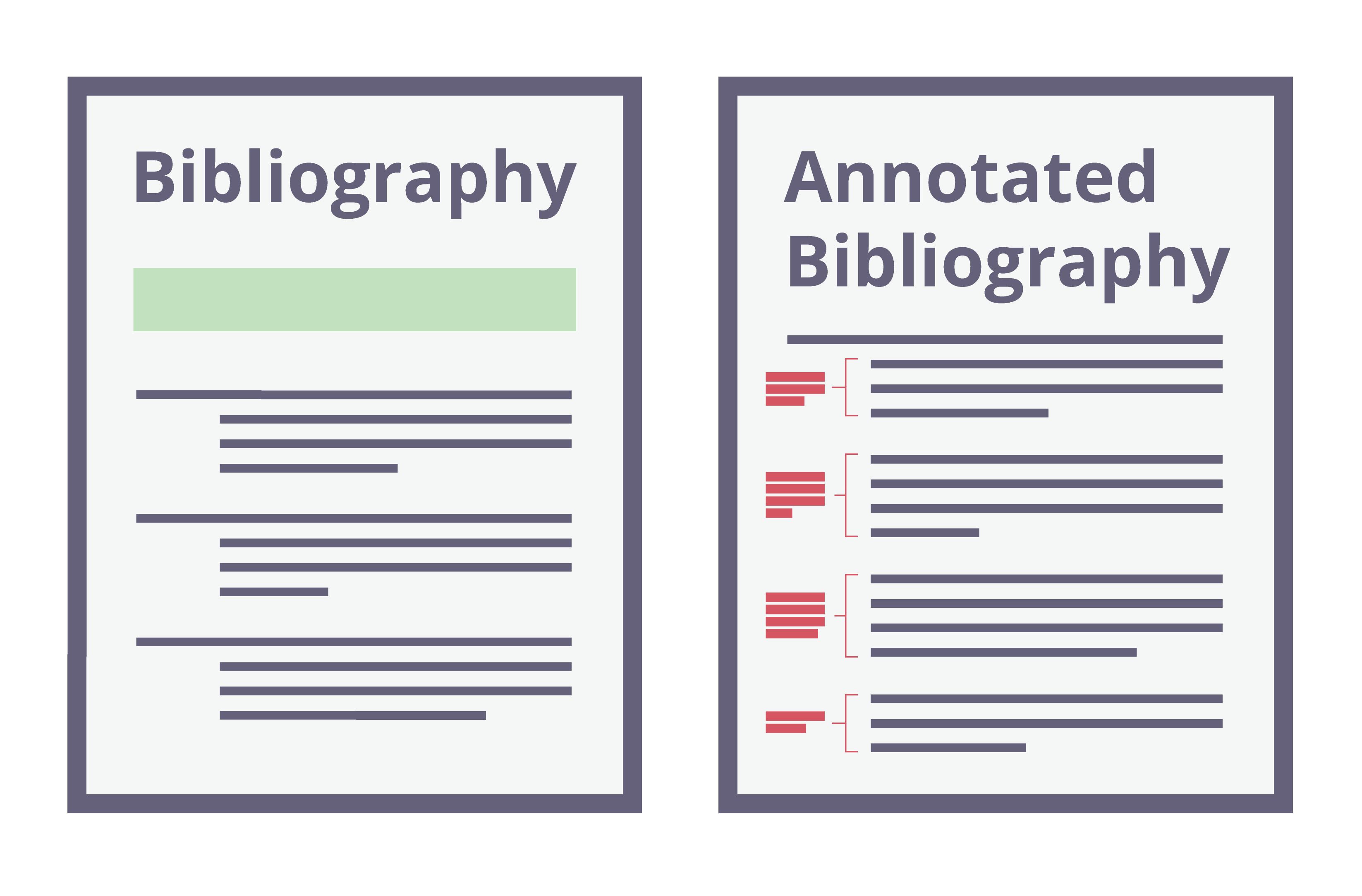This page is a jumping-off point for assignments using Annotated Bibliographies. We're using this page to direct you to tutorials and other information that will help you to create your Annotated Bibliography. Looking for something that you can't find? Use the Ask a Librarian form to let us know!
Understanding the scholarship on a topic you are exploring is essential to your success as a researcher. Often, you will be asked to produce an annotated bibliography where you can display this understanding.
A traditional bibliography is a list of sources consulted in your research. When you write a research paper, you include a bibliography so your readers and instructor can refer to the sources you used to support your ideas.

An annotated bibliography goes a step further and provides a summary of each source or an explanation of that source’s relevance to your research. Often, an annotated bibliography is a stepping stone in a larger research process like a capstone project, literature review, or scientific study.
In this tutorial, we’ll discuss the process of creating summary, evaluation, and reflective annotations, all of which you may be required to submit as part of an assignment.
In Part 1, this tutorial will teach you to…
In Part 2, you’ll learn how to…
An Annotated Bibliography is a great tool for organizing your research
A bibliography is a list of sources (books, journals, Web sites, periodicals, etc.) one has used for researching a topic. Bibliographies are sometimes called "References" or "Works Cited" depending on the style format you are using. A bibliography usually just includes the bibliographic information (i.e., the author, title, publisher, etc.).
An annotation is a summary and/or evaluation. Therefore, an annotated bibliography includes a summary and/or evaluation of each of the sources. Depending on your project or the assignment, your annotations may do one or more of the following.
Summarize: Some annotations merely summarize the source. What are the main arguments? What is the point of this book or article? What topics are covered? If someone asked what this article/book is about, what would you say? The length of your annotations will determine how detailed your summary is.
For more help, see our handout on paraphrasing sources.
Assess: After summarizing a source, it may be helpful to evaluate it. Is it a useful source? How does it compare with other sources in your bibliography? Is the information reliable? Is this source biased or objective? What is the goal of this source?
For more help, see our handouts on evaluating resources.
Reflect: Once you've summarized and assessed a source, you need to ask how it fits into your research. Was this source helpful to you? How does it help you shape your argument? How can you use this source in your research project? Has it changed how you think about your topic?
Your annotated bibliography may include some of these, all of these, or even others. If you're doing this for a class, you should get specific guidelines from your instructor.
Source= Annotated Bibliographies from Purdue OWL

At the top of the page, you will put the title "Annotated Bibliography" in the center of the page.
Under the title state your Thesis - What is the focus of your research?
For each source you use, you will...
Copy the MLA Style citation
Write a brief summary and discuss how the source connects to your thesis. Include citations from the source to show these connections.
 Where to start
Where to start